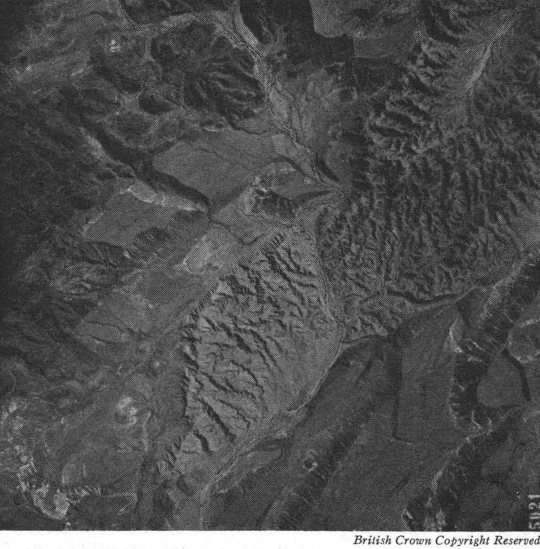#photogeology
Text
Mamada pete madura corrida en su boca
Fucked up on meth
Anime school girl cosplay
Boy friend fuck girlfriend
Puta Venezolana Prepara el Culito para un gran Sexo Anal
casero machala puerto bolivar
sexo gay en argentina
Petite sub Nikki Bell gagging on huge maledom cock
BAJO FALDAS COLEGIALA
Raunchy cock sucking experience with sexy chicks
#Andreas#apotheosis#apprehensive#phototroph#industrialise#centibar#asininities#invertebrate's#cyeses#uninvadable#Peronospora#Codel#yesdaddy#tediousness#morpunkee#furtherance#photogeology#superambitiousness#spoonmaking#Unterseeboot
1 note
·
View note
Photo

On this date in 1960, the U.S. Geological Survey announced the completion of the first known photogeological survey of the lunar surface. This study was part of a program to select future lunar landing sites. The images were made from photographs taken by NASA's Lunar Orbiter spacecraft, which were then combined into mosaics using an image processing technique called "stereoscopic mapping." The resulting maps showed areas where astronauts might land safely, as well as areas that were better suited for other purposes such as research or exploration. -------------------------------->>>>>> Sign up for our newsletter! It's filled with new content just like this story, delivered straight to your inbox. We won't spam you or share your email, and you can unsubscribe at any time - https://medium.com/@cybertheticproject <<<<<<-------------------------------- #astrophysics #astrology #astronomy #planets #physics #sciencefiction #science #scifi #nasa #cosmos #universe #galaxy #startrek #stars #elonmusk #origin #tesla #mars #maths #milkyway https://www.instagram.com/p/ChNinv5ufr-/?igshid=NGJjMDIxMWI=
#astrophysics#astrology#astronomy#planets#physics#sciencefiction#science#scifi#nasa#cosmos#universe#galaxy#startrek#stars#elonmusk#origin#tesla#mars#maths#milkyway
0 notes
Text
A Geological Interpretation Of An Air Photograph Of British Somaliland
#Somaliland: This #Paper was read at the 19th Annual Meeting of the #Society, Hotel Shoreham, Washington DC, January 14-16, 1953. Figure 1 shows an air #photograph of part of #BritishSomaliland and Figure 2 is a #photogeological #interpretation of this photograph.
(more…)

View On WordPress
#Air#British Somaliland#British Somaliland Protectorate#Formation#Geological Survey#Geology#Interpretation#Photograph#Somaliland
0 notes
Photo

EUROPEAN PLANETARY MAPPING: A WORLDWIDE, HISTORICAL VIEW OF OUR SOLAR SYSTEM A catalogue that provides a complete overview of over 2,200 planetary maps produced worldwide between 1600 and 2018 will be presented today at the European Planetary Science Congress (EPSC) 2018 in Berlin. The catalogue has been produced by Henrik Hargitai, from Eötvös Loránd University in Budapest, and Mateusz Pitura, from the University of Wroclaw in Poland. “Production of planetary maps started in Europe in the 1600s. It expanded to the United States and the Soviet Union in the 1960s and, more recently, has spread to China and Japan,” said Hargitai. “Over time, mapping has become less coordinated and more diverse, so that today it is becoming challenging to oversee the proliferation of spatial data published in different countries by institutions, individual researchers and, increasingly, citizen scientists. A common database is needed.” To provide this definitive overview, Hargitai and Pitura have created the open access “International Catalogue of Planetary Maps,” available at http://planetarymapping.org and through the International Cartographic Association’s Commission on planetary cartography. The data can be filtered by author, year, country, scale and type and reveal long-term trends in planetary mapping and planetary science activities. Recent web-based map services, such as MoonTrek by NASA/JPL/Caltech or OpenPlanetaryMap’s basemap of Mars, are organised into layers, so that the user can view and analyse surfaces in detail with Geographic Information System (GIS) tools. Although most of the maps in the catalogue show Mars and the Moon, almost all the major bodies of the solar system are represented, including Mercury, Venus, Ceres, and the satellite systems of Jupiter, Saturn and Pluto. “Our catalogue is being updated regularly with both newly resurfaced historic maps and new additions. For the future, we plan to add maps that have been published in journal articles and digitize maps that do not yet include GIS formats,” added Hargitai. “Maps are used for mission planning, surface operation and post mission analysis. In the near future they will be key components of planning and operating new human missions. We live in a transition period where static maps that characterized the last 400 years may become extinct, replaced by dynamic digital map services and tools.” IMAGE....Details of four maps representing planetary maps with different themes, goals and eras. 1647: One of the first detailed telescopic maps of the Moon, with an Earth-like representation (J. Hevelius: Selenographia). 1824: the first segmented lunar map with topographic and albedo details of the Moon, using hachures (W. Lohrman: Topographie der sichtbaren Mondoberflaeche, Dresden). 1960: the first astrogeologic map of the Moon, the Lunar Photogeologic Chart (LPC 58) that introduced stratigraphic methods to planetary mapping (EM Shoemaker, RJ Hackman, USA). 2016: Map of Charon designed for children, representing a new type of outreach maps (A. Gyöngyösi, Hungary).
0 notes
Photo

Generalized Photogeological Map of the Moon by the U.S. Geological Survey (1961) https://i.redd.it/y2vwgvb8jbnz.jpg #MapPorn #Mapping https://i.redditmedia.com/WvycIJ-4m5ziRksO5poXAYOgav8o2SLrOh-euS1wXKY.jpg?fit=crop&crop=faces%2Centropy&arh=2&w=640&s=ac4f9374a5a5e3782920cd429649cdfe
0 notes